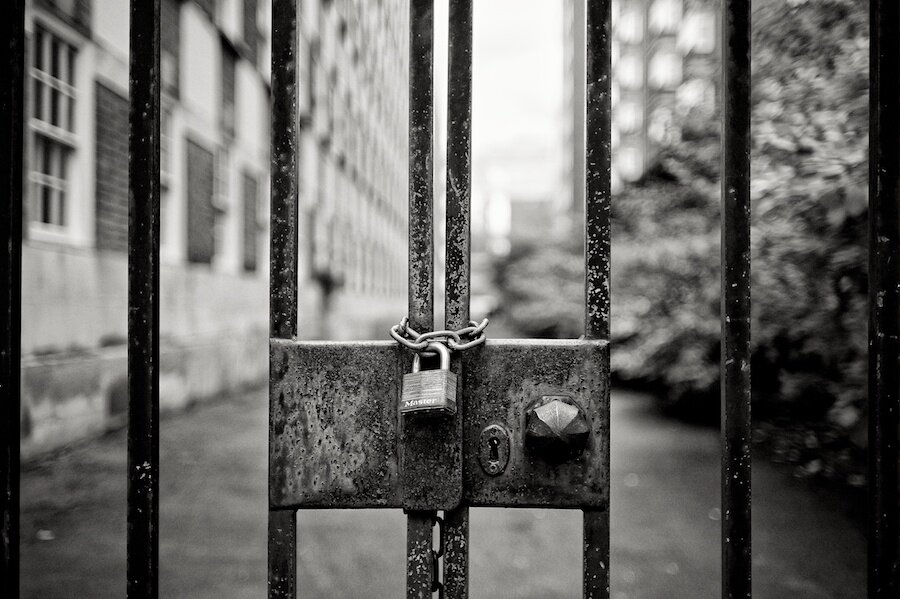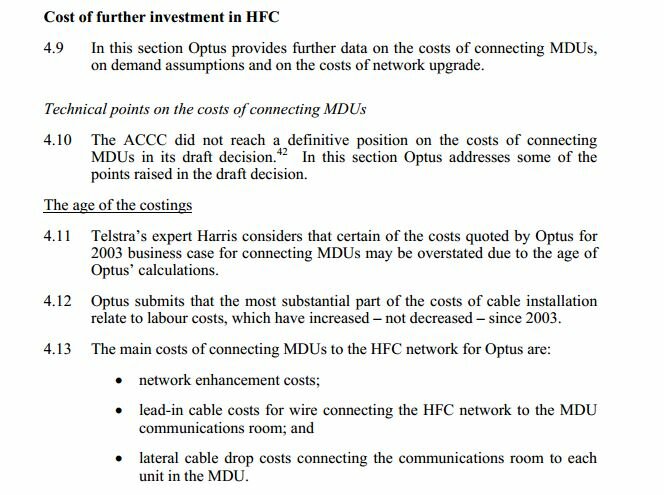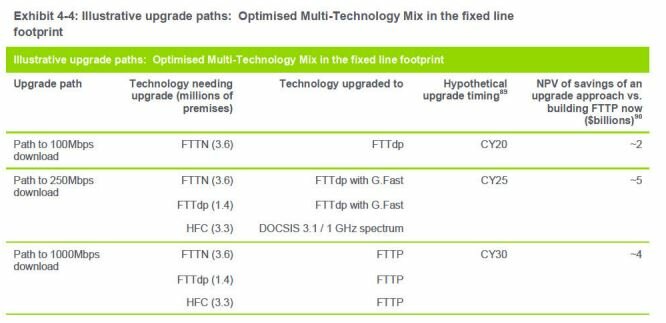
Photograph: Locked Gate by Matt White
NBN Co has, for some time, had serious problems with Multi-Dwelling Units (MDU). Not through any fault of its own, this is just the nature of bodies corporate; being a hurdle where possible.
The problem now is what to do about MDU’s in this “dog’s breakfast” approach?
There is no solution and NBN Co are now being squeezed from both ends; costs and competitors.
On the cost end there are serious limitations to where it is possible to deliver FTTB, meaning the only other option is to install an FTTN cabinet nearby and hope the lead-ins (cable running from the pit out the front to the Main Distribution Frame [MDF] in the building) for smaller apartment blocks are in good working order, the internal building wiring is ok, and there’s not 100m+ of cabling from the pit to the first socket.
The problem is, there are no plans to deploy FTTN in many areas with MDUs, the plan is to leave the Telstra or Optus Hybrid Fibre-Coax (HFC) network in place, something that has baffled me since the release of the government’s now reneged on policy document. HFC presents some serious challenges with MDU’s as the coaxial cable is too thick to use in most internal wiring conduit, meaning the cable has to be installed on the outside of buildings or new conduit installed internally. And that’s if you’re lucky.
If you live in a row of townhouses, you’re up for even greater expense per customer, depending on what needs to be done, with telecommunications poles costing exorbitant amounts, and the lack of comms rooms meaning installs can be tricky.
In a block of townhouses like mine, with the houses running down the block, this could be in the $30 000 range, bringing the cost up to over $3500 per premises. Looking at websites like Whirlpool.net.au, quotes sit in the $5 000 to $10 000 range even for apartment blocks, not exactly cheap if you’re the only one who wants HFC, therefore forced to pick up the tab.
In the new Multi-Technology Mix, who picks up this tab? By the seems of it, if recent reports are to be believed, and Customer Premises Equipment (CPE) costs are to be borne by customers, not NBN Co. Any internal wiring, which in an MDU is anything past the MDF, would be the responsibility of the customer. This is something Bill Morrow confirmed during the Senate Committee on the NBN on Monday.
So where does that leave MDU users? Up the proverbial creek without a paddle.
Don’t have $10 000, $20 000, $30 000, or more to hook up all apartments? Tough luck. Your body corporate/fellow residents object to holes being drilled into walls, drops from poles outside, or just doesn’t want Optus/Telstra’s monopoly installed into the building? Tough luck.
It’s interesting to note that Optus made it clear in 2008 that the costs of installing HFC into MDU are actually increasing, not decreasing, as Turnbull keeps saying. With most of it being eaten up in the actual install of the HFC service to the MDU and not the equipment associated with said install:

This leads me to assume that the soonest MDU customers in an HFC area will see an upgrade to their telecommunications is in 2030, as shown in exhibit 4-4 on page 100 of the NBN Co Strategic Review:

As can be seen, HFC areas will receive an upgrade to faster HFC, but no upgrade to the underlying infrastructure until, at the earliest, 2030.
This raises the question: how will Turnbull guarantee even 25Mbps to 100% of the country by any date before 2030 when MDU customers will be left languishing on speeds well below the theoretical maximum speed of 24Mbps that ADSL2+ offers?
Well, the answer is he can’t, and there should be no suggestion that even with HFC he can offer such guarantees without drastic infrastructure investment, on top of the already high cost of upgrading HFC and installing FTTN. Even 25/1Mbps would be impossible to guarantee on a shared medium like HFC without drastic node splitting.
Even across the pond, Crown Fibre Holdings – New Zealand’s equivalent of NBN Co – has rejected Vodafone NZ’s offer of incorporating their HFC network into the UFB (Ultra-Fast Broadband project) saving NZ$500 million on the project. The reason given was that Vodafone was “obviously pursuing its own commercial interests”, with non-profit organisation InternetNZ asking “This suggestion by Vodafone begs the question, why would Kiwis choose to make use of a second-class network when we are already on our way to having a first-class network?”.
Not everything is doom and gloom for MDU customers, with TPG moving on with their FTTB plans, which have scared the living daylights out of NBN Co. There’s a suggestion that NBN Co would start delivering FTTP to apartments where TPG has requested access, reinforcing claims from many in the industry both before and after the election that NBN Co would struggle to compete with private networks if the change to FTTN/FTTB was made.
This presents a massive headache for NBN Co, as many of the executive/director team admitted to on Monday. They admitted that if TPG gets there first, there is no chance of having FTTB installed by NBN Co, cutting into some of the most profitable areas: high density MDUs.
Essentially the technology used in FTTB (the same as in FTTN: VDSL2) will not work if there is more than one provider in the building. You can’t bundle pairs (phone lines) from multiple providers in the same conduit, the crosstalk (both NEXT and FEXT) would cause the service to be slow at best, unusable at worst.
On top of this, there would need to be exclusivity contracts between bodies corporate and telcos like TPG, something that NBN Co has little chance of getting by. Some are suggesting that NBN Co will have to follow TPG techs around, figure out where they are deploying FTTB, then started deploying FTTP as soon as possible.
While humorous, this is probably closer to the truth than we would like.
These problems will not disappear overnight for NBN Co, as Turnbull promised before the election, they will require considered responses from both NBN Co and those who are affected. This ham fisted rollout will make things worse, if anything, for MDU customers, leaving many languishing with terrible speeds, high install costs, or little option in the way of providers.
The inconsistency of copper, the difficulty of installation, and the inability of there being any infrastructure level competition in an FTTB world leads to only one conclusion; do it once, do it right, do it with fibre.








